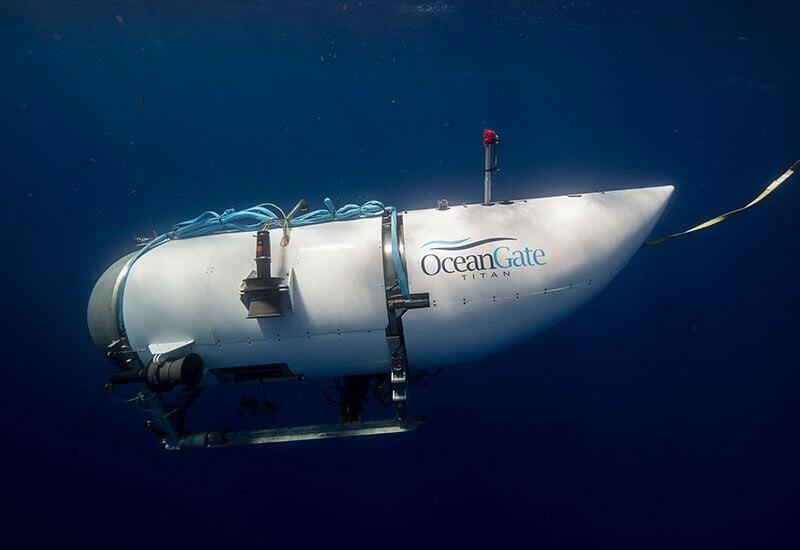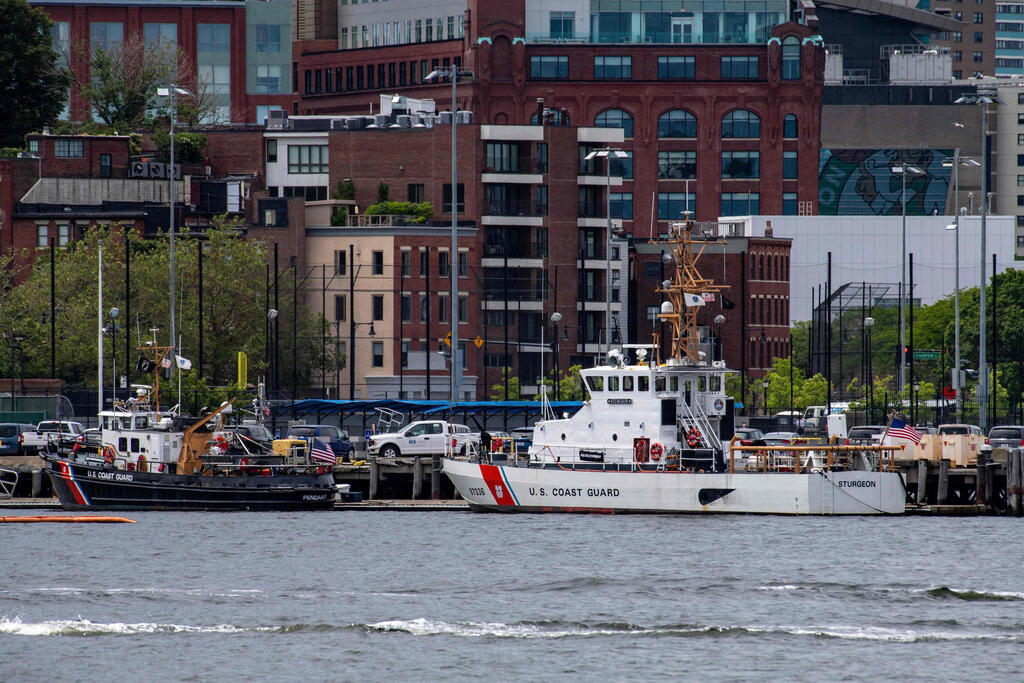Getting your Trinity Audio player ready...
In the ongoing extensive search for the missing private submersible "Titan," which was en route to the wreck of the Titanic in the North Atlantic Ocean, recent reports indicate the detection of somewhat promising "clicking sounds." These sounds were heard every 30 minutes over several hours.
The U.S. Coast Guard, which is leading the search alongside Canadian teams, confirmed that a Canadian P-3 military aircraft, equipped for maritime intelligence and anti-submarine warfare, detected underwater noises. No further details have been officially disclosed. In response to the detection, which is reported to include clicking sounds heard every 30 minutes over several hours, efforts were directed to the area where the robotic search vehicles were deployed, but as of now no significant findings have been obtained. The Coast Guard has shared the information with US Navy experts for analysis and consideration of continued search plans.
2 View gallery


The private submersible "Titan," which was en route to the wreck of the Titanic in the North Atlantic Ocean
(Photo: oceangate.com)
According to reports from US media, an internal memo from the Department of National Security in the US government has surfaced, shedding light on the ongoing search for the missing submarine. After the initial detection of sounds in the vicinity where the submersible vanished, which had five individuals on board, another sonar was deployed. Approximately four hours later, similar signals were received.
While the precise timing of the initial identification of the underwater sounds remains unclear, CNN highlights that in the subsequent identification, they were not referred to as "clicking sounds" in the government memorandum, but rather as "another acoustic feedback." The origin and nature of these sounds are still unknown. However, the leaked memorandum describes them as providing "hope" for the possibility of locating survivors.
The ongoing search operation is a race against time as the authorities are aware of the limited oxygen supply available to the passengers aboard the Titan, assuming they are still alive. Estimates suggest that the remaining oxygen will only be sufficient for approximately one more day. The Titan submerged into the depths of the ocean on Sunday at around 11:00 a.m. (Israel time) and was equipped with a 96-hour oxygen reserve in case of emergencies.
The ongoing search operation is extensive and involves multiple resources. Commander Jamie Frederick of the American Coast Guard announced during a press conference that aircraft from the United States and Canada have collectively scoured an expansive area of approximately 4,600 square miles in the open sea.
In addition to naval vessels and aircraft from both countries, merchant ships passing through the vicinity are providing assistance. Furthermore, a commercial vessel equipped with an unmanned submarine has joined the search efforts. Adding to the collaborative efforts, a French research vessel, equipped with an underwater robot, is expected to arrive in the area during the night (local time). These combined efforts reflect the comprehensive approach taken to locate the missing submersible.
The Titan measures approximately 22 feet in length and weighs around 20,000 pounds. It has a capacity for five people and is capable of diving to depths exceeding 13,000 feet. It requires eight hours to complete a dive to the wreckage of the Titanic and return to the sea surface.
The Titan is a submersible, not a submarine. The difference lies in the way it is deployed. While a submarine has enough power to leave port and come back to port under its own power, a submersible has more limited power and range. It needs a mother ship from which to launch, to return to, and for support and communications.
Five people were on board the Titan when it embarked on its voyage from the Canadian province of Newfoundland. They are:
Stockton Rush - Despite having a background in aerospace and technology, Rush established OceanGate Inc. in 2009 with the objective of offering crewed submersibles for underwater researchers and explorers, as stated on the company's website. Rush himself serves as the pilot of the Titan submarine.
Hamish Harding - Harding, a British businessman, currently resides in Dubai, United Arab Emirates. He holds the position of chairman at Action Aviation, an aircraft brokering company. As a mission specialist, Harding participated in the expedition and contributed financially towards it.
Shahzada and Suleman Dawood - A father-and-son duo who belong to a highly influential family in Pakistan. The Dawood family, known for their prominence, confirmed that both Shahzada and Suleman were on board the vessel. Their company, Dawood Hercules Corp., operates from Karachi and is actively engaged in various sectors such as agriculture, petrochemicals, and telecommunication infrastructure.
Paul-Henry Nargeolet - Nargeolet, a former officer of the French navy, is widely recognized as a leading authority on the Titanic due to his extensive experience exploring the wreckage over numerous years. He currently holds the position of director of underwater research at E/M Group and RMS Titanic Inc. With an impressive record of 37 dives to the wreck, Nargeolet has played a crucial role in overseeing the recovery of around 5,000 artifacts from the site. His expertise and dedication have solidified his reputation as a distinguished Titanic expert.


